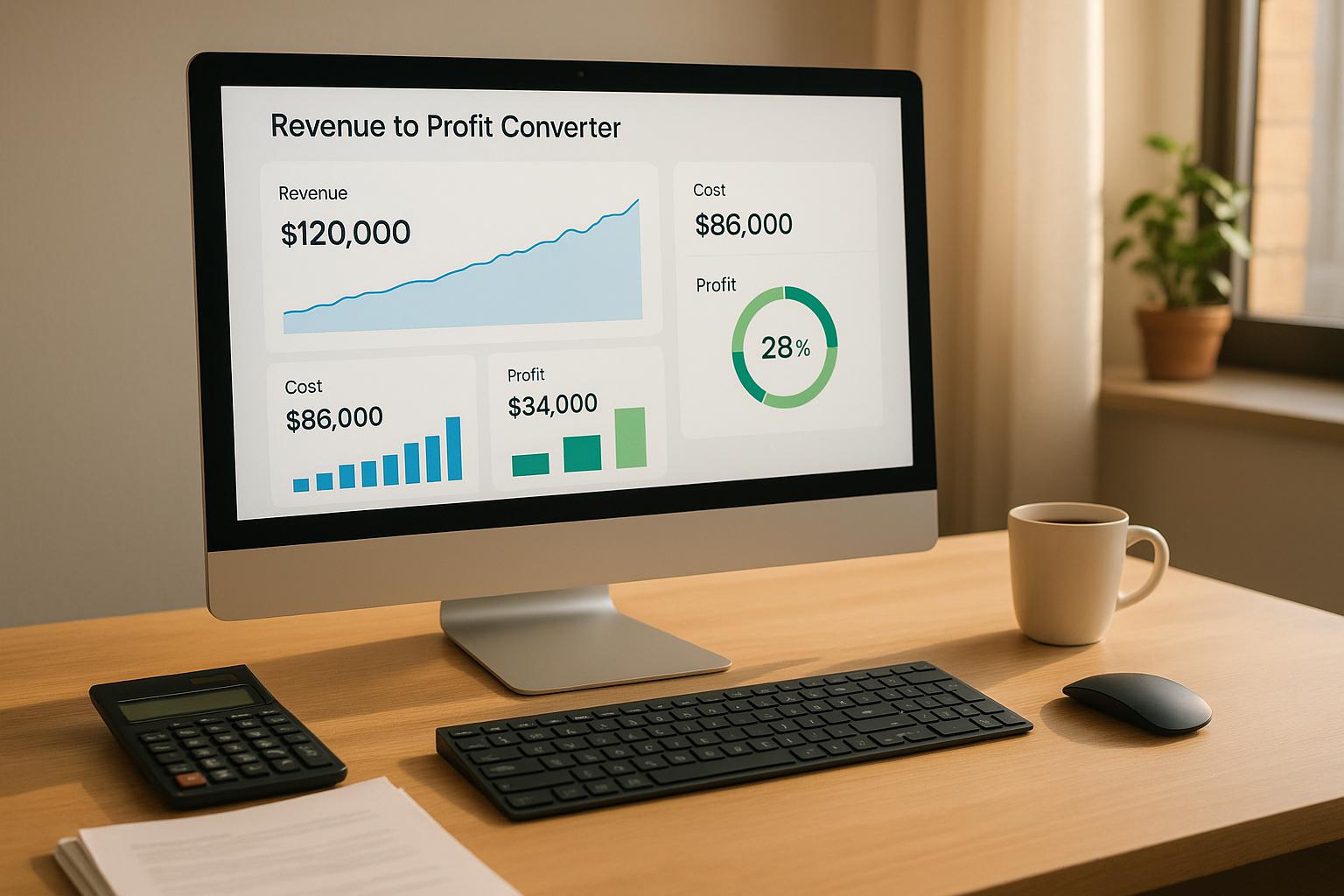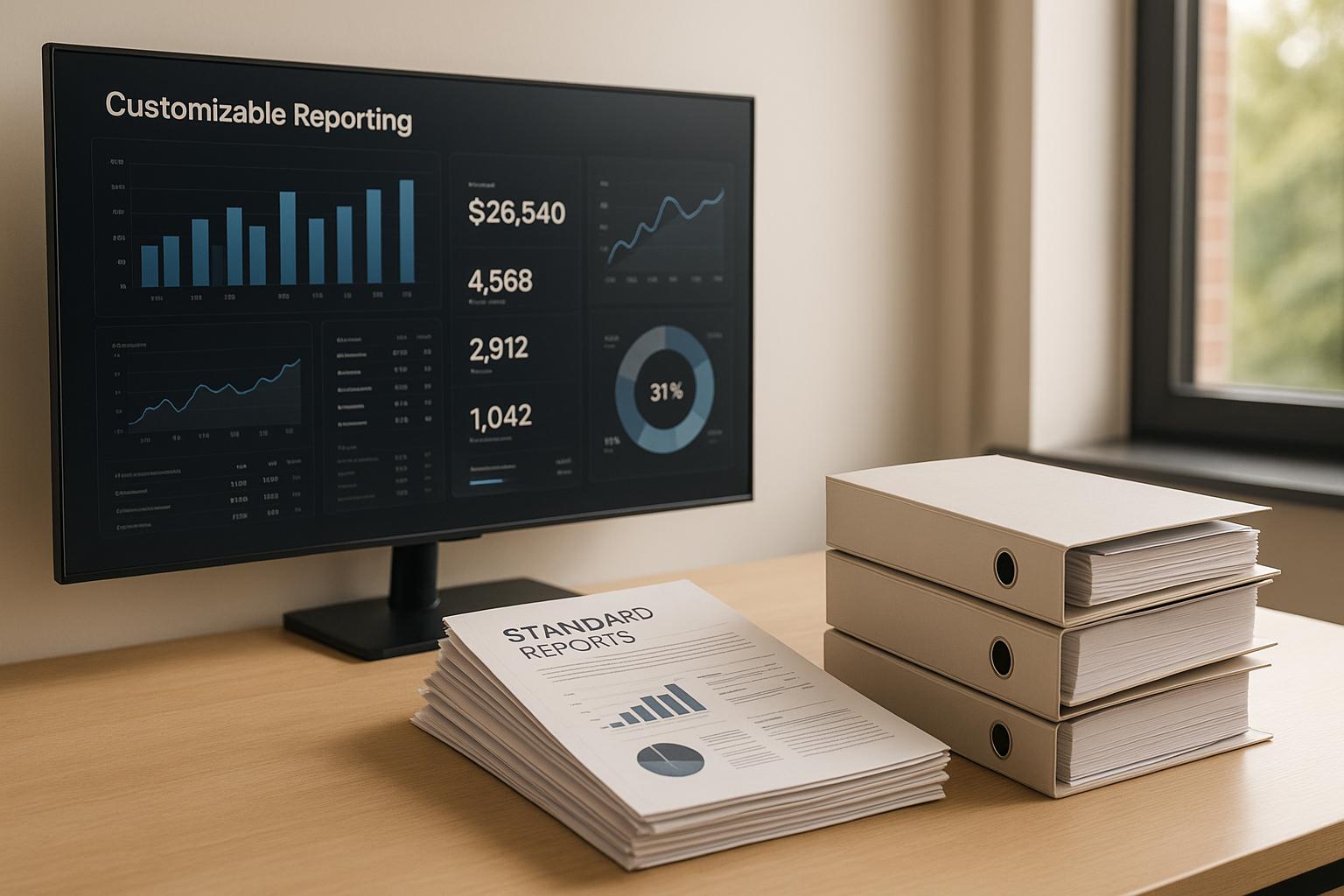Cash Flow Projections for Revenue Growth

Cash flow projections are essential for managing your business's finances and driving growth. They help you predict when money will come in and go out, spot potential cash shortages, and plan for major expenses. Here's how they work:
- What They Do: Forecast money movement to prepare for expenses and growth opportunities.
- Why They Matter: Accurate projections align financial planning with revenue goals.
- Steps to Start:
- Review past financial records for patterns.
- Estimate revenue growth using sales data and market trends.
- Break down costs into fixed (e.g., rent) and variable (e.g., raw materials).
- Building a Model: Choose monthly, quarterly, or annual projections based on your business needs. Include income, expenses, and irregular costs like equipment upgrades.
- Testing & Updating: Plan for best, worst, and average scenarios. Regularly update forecasts to stay on track.
Getting Started with Cash Flow Projections
Reviewing Past Financial Records
Start by examining your historical financial statements - cash flow, balance sheet, and income statement - to spot patterns in your finances. Pay close attention to:
- Seasonal changes in revenue and expenses
- Timing of payments from key clients
- Regular operating costs and their payment schedules
- Growth rates in various revenue streams
These insights from the past can help you make better predictions about future revenue.
Estimating Revenue Growth
Combine your historical financial data with a current market analysis. Factors to consider include:
- Your sales pipeline, conversion rates, customer retention rates, market expansion efforts, and pricing adjustments
Categorize revenue streams to track them more effectively. For example, separate recurring income from one-time sales, and monitor each product line individually.
"Hire PSG if you want to make your life easier and have accurate data." - Michael Mancuso, CIO, New Law Business Model
Breaking Down Costs
To analyze costs effectively, split them into fixed and variable categories. This approach helps you predict how costs will shift as revenue changes.
| Cost Type | Examples | Behavior as Revenue Changes |
|---|---|---|
| Fixed | Rent, Insurance, Base Salaries | Remains steady regardless of revenue |
| Variable | Raw Materials, Sales Commissions | Changes directly with revenue |
Knowing how these costs behave allows for better projections and highlights areas where you can save through increased efficiency.
Creating Your Projection Model
After reviewing your financial history and breaking down costs, it’s time to build your projection model. This model will help you forecast future financial performance with greater accuracy.
Choosing Time Periods
Pick projection periods that align with your business operations and growth objectives. Monthly projections provide a detailed view, perfect for businesses with frequent cash flow changes. Quarterly projections suit companies with steady revenue and longer sales cycles. Annual projections are better for long-term planning and strategic decisions.
Here’s a quick breakdown to guide your choice:
| Projection Period | Best For | Advantages |
|---|---|---|
| Monthly | Fast-growing or seasonal businesses | Precise cash flow tracking, quick adjustments |
| Quarterly | B2B companies, steady revenue | Better for trend analysis and strategic decisions |
| Annual | Long-term projects, infrastructure planning | Ideal for forecasting and investor presentations |
Adding Income and Expenses
Your model should clearly separate income and expenses. Break revenue into categories that reflect your business goals, and organize expenses based on the fixed and variable costs identified earlier.
Key elements to include:
- Revenue streams: Divide into recurring income, one-time sales, and service fees.
- Payment timing: Account for payment terms and collection cycles.
- Operating expenses: Cover payroll, rent, utilities, and marketing.
- Growth-related costs: Include expenses that increase with revenue.
Planning for Irregular Expenses
Plan for larger, less frequent costs to avoid surprises. These might include:
- Capital investments: Equipment purchases or tech upgrades.
- Expansion costs: Setting up new locations or entering new markets.
- Debt payments: Loan installments or credit repayments.
- Seasonal inventory: Stocking up for peak demand periods.
For major expenses, create a timeline showing how they’ll affect cash flow. This approach helps you maintain reserves and avoid cash shortages while staying prepared for growth opportunities.
sbb-itb-e766981
Testing and Updating Projections
Reviewing and testing cash flow projections helps spot potential issues early, ensuring they stay accurate and support steady revenue growth.
Multiple Scenario Planning
Prepare for different market conditions by creating three projection scenarios:
| Scenario Type | Revenue Assumptions | Risk Level | Planning Focus |
|---|---|---|---|
| Optimistic | Revenue exceeds targets | Low | Growth opportunities |
| Realistic | Revenue meets targets | Moderate | Core operations |
| Pessimistic | Revenue falls below targets | High | Cost management |
For each scenario, adjust key factors like sales conversion rates, customer payment schedules, operating expenses, and market trends. These variations help identify areas where cash flow might falter, so you can take action before problems arise.
Fixing Cash Flow Problems
If your projections show potential cash shortages, address them immediately to maintain financial stability:
-
Immediate Actions
Review and cut non-essential expenses to reduce costs quickly. -
Medium-Term Solutions
Update pricing strategies or invoicing processes to speed up incoming cash. -
Long-Term Planning
Build cash reserves and secure credit lines during strong periods to prepare for future challenges.
Regular Updates
Consistent updates keep your forecasts accurate and actionable.
"Review & refine the forecast and targets weekly" - Phoenix Strategy Group
Establish a structured review process. Compare actual results weekly, update revenue forecasts monthly, adjust expense categories quarterly, and revisit growth targets as market conditions shift. Use clear KPIs and regular team check-ins to ensure everyone understands their role in maintaining strong cash flow and hitting financial goals.
Using Projections for Growth
Making Better Decisions
Once your projection model is in place, you can use the insights to make smarter investment decisions. Cash flow data can guide you to:
- Plan major purchases at the right time
- Schedule new hires when funds are available
- Establish achievable growth targets
- Assess opportunities for market expansion
By linking cash flow data to specific growth plans, you can create a clear decision-making framework. This approach helps you stay financially stable while pursuing ambitious growth goals.
Meeting Revenue Targets
Tie your cash flow projections to specific revenue goals to ensure steady growth. Pay attention to key performance indicators (KPIs) that directly influence cash flow and revenue outcomes:
| Revenue Component | Cash Flow Impact | Growth Strategy |
|---|---|---|
| Sales Pipeline | Payment timing | Shorten the sales cycle |
| Customer Retention | Recurring revenue | Lower churn rates |
| Pricing Strategy | Cash per transaction | Adjust pricing effectively |
| Payment Terms | Collection speed | Boost working capital |
Review these metrics weekly to spot trends and make timely adjustments. Strong coordination between finance and revenue teams is essential to align on growth priorities. For deeper insights, expert financial advice can be a game-changer.
Expert Financial Support
Getting professional financial guidance can greatly enhance the precision and impact of your cash flow projections. Phoenix Strategy Group specializes in helping mid-sized businesses turn financial data into actionable growth strategies.
Their services include creating tailored financial models, tracking weekly metrics, setting department-specific KPIs, and establishing a structured process for reviewing forecasts. This kind of expert input ensures your projections not only predict trends but actively fuel your growth plans.
Summary
Steps Review
Dive into your historical data, estimate growth trends, break down costs, and create a flexible projection model. This method turns your financial data into practical forecasts that guide smart growth decisions.
Planning Benefits
Clear projections offer better financial insight:
| Benefit | Impact | Outcome |
|---|---|---|
| Financial Clarity | Early detection of cash flow issues | Avoids disruptions in operations |
| Growth Alignment | Department KPIs are synchronized | Encourages seamless scaling efforts |
| Risk Preparedness | Models various scenarios for uncertainties | Helps navigate market changes |
| Smart Investments | Data-driven purchase decisions | Makes the best use of available funds |
These insights give you a strong foundation for stable growth and informed decision-making.
Next Steps with Phoenix Strategy Group

Leverage these benefits with expert support. Partnering with Phoenix Strategy Group connects your refined projections to strategic financial expertise for scalable growth.
"As our fractional CFO, they accomplished more in six months than our last two full-time CFOs combined. If you're looking for unparalleled financial strategy and integration, hiring PSG is one of the best decisions you can make." - David Darmstandler, Co-CEO, DataPath
Their approach includes creating integrated financial models, tracking key weekly metrics, and setting department-specific KPIs. This process transforms raw financial data into actionable strategies while maintaining a strong cash flow as your business grows.




